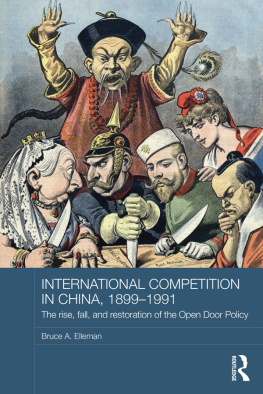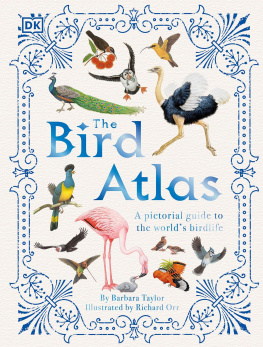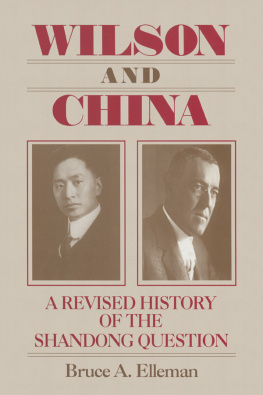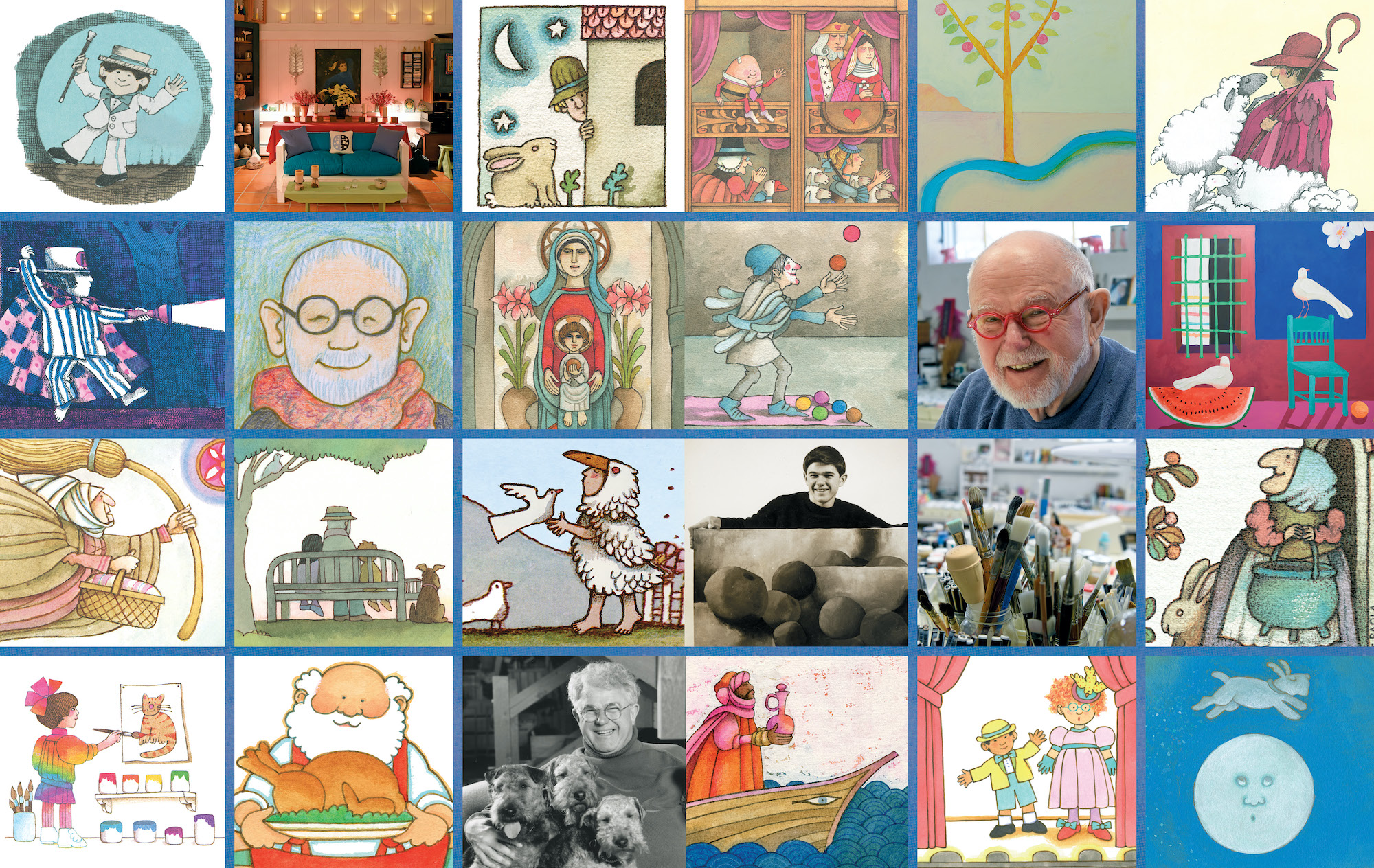Contents
Guide
To Donour time together was never enough

SIMON & SCHUSTER BOOKS FOR YOUNG READERS
An imprint of Simon & Schuster Childrens Publishing Division
1230 Avenue of the Americas, New York, New York 10020
www.SimonandSchuster.com
Copyright 1999, 2021 by Barbara Elleman
All rights reserved, including the right of reproduction in whole or in part in any form.
SIMON & SCHUSTER BOOKS FOR YOUNG READERS is a trademark of Simon & Schuster, Inc.
For information about special discounts for bulk purchases, please contact Simon & Schuster Special Sales at 1-866-506-1949 or .
The Simon & Schuster Speakers Bureau can bring authors to your live event. For more information or to book an event, contact the Simon & Schuster Speakers Bureau at 1-866-248-3049 or visit our website at www.simonspeakers.com.
Jacket design by Laurent Linn. Interior design by Alicia Mikles.
Jacket design by Laurent Linn
Jacket illustrations 19732018 by Tomie dePaola
Personal photographs courtesy of Whitebird, Inc.
Portraits of the author by Laurent Linn
Library of Congress Cataloging-in-Publication Data
Names: Elleman, Barbara author.
Title: The worlds of Tomie dePaola : the art and stories of the legendary artist and author / by Barbara Elleman.
Description: Revised edition. Copyright: 1999, additional material (c) 2021. | New York : Simon & Schuster Books for Young Readers, 2021. | Includes bibliographical references and index.
Identifiers: LCCN 2017059000 (print) | LCCN 2018000166 (ebook) | ISBN 9781534412262 (hardcover : alk. paper) | ISBN 9781534412279 (eBook)
Subjects: LCSH: DePaola, Tomie, 1934 | Authors, American20th centuryBiography. | IllustratorsUnited StatesBiography. | Childrens storiesAuthorship. | Illustration of booksUnited States20th century.
Classification: LCC PS3554.E1147 (ebook) | LCC PS3554.E1147 Z65 2018 (print) | DDC 813/.54 [B] dc23
LC record available at https://lccn.loc.gov/2017059000
Introduction
O n March 30, 2020, the hand that gave life to the affable Strega Nona, that infused humor into a book about quicksand, and that brought life to a both poignant and funny childhood incident in Tom laid down its brush for the last time. Tomie dePaola, sadly, died suddenly following surgery at Dartmouth-Hitchcock Medical Center near his home in New London, New Hampshire.
Illustrator, artist, author, storyteller. Tomie dePaola intrigued me during my years as a school librarian, as a reviewer and childrens book editor at Booklist, as editor in chief of Book Links for the American Library Association, and in retirement as an active volunteer at the Eric Carle Museum of Picture Book Art.
Through those early years, when an astonishing number of picture books came to my desk for review, Tomies engrossing stories and accompanying art always struck me as special. His line work, color palettes, and character placements, which added vibrancy to his work, especially challenged me to explore his thought processes and picture book techniques. The result, Tomie dePaola: His Art and His Stories, was published in 1999.
Then a couple of years ago, at the nudging of my (and Tomies) literary agent, Doug Whiteman, I decided to revisit Tomies career. I read and studied his titles that had stood the test of time, and explored new books that seemingly burst from his ever-creative mind. They offered childrenand all readersimaginative stories filled with distinctive illustrations.
For The Worlds of Tomie dePaola: The Art and Stories of the Legendary Artist and Author, as I traced tidbits from our friendship, my understanding of Tomies innate ability to produce picture books that children love increased. It would be hard to imagine, I mused, the world of childrens books without Strega Nona, The Art Lesson, Charlie Needs a Cloak, or The Clown of God.
I first met Tomie at a conference in Louisville, or maybe it was Atlanta, or possibly Cleveland or Phoenixneither of us quite remembered or agreed on the actual time or place. Wherever it was, a glass of wine was undoubtedly involved, and there were laughs aplenty. Most important, it marked the beginning of a long, continuing conversation that, in time, involved my husband, who was also a lover of art, theater, and eventually picture booksespecially those by Tomie.
Our first meetings, usually in some book-associated situation, typically meandered over which book he was currently working on and what titles were crossing my reviewers desk. However, as time went on, our conversations became more personal and we began to exchange family stories.
Born in the same year, we both grew up during the Depression and World War II, attended college, found satisfaction in great art (Tomie as artist, I as appreciator), had a proclivity for the theater, and shared a preference for good Italian food.
As we talked, it became obvious that Tomie had a remarkable ability to reach back into his childhood years with clarity, empathy, and an innate understanding of the time. His detail of memory far exceeded mine, and I happily let him entertain me with stories about the up-and-down relationships of grandparents, aunts, uncles, siblings, and cousins who relished one anothers foibles and fancies. Thinking back, I hear Tomies voice and the sound of his ready laughter. I feel the poignancy as he tells the story of his grandmothers death in Nana Upstairs & Nana Downstairs or describes the moment he learned about Pearl Harbor in Here We All Are, from his 26 Fairmount Avenue series.
At one point in our friendship, we were both scheduled to speak at the University of Southern Mississippi (where Tomie was receiving an award for his total body of work), which triggered conversations of our own college days. Tomie reflected on how Pratt Institute had opened a new world for himnot only solidifying his early determination to become a picture book illustrator, but giving him the opportunity to explore real art in New York museums. He also told of a summer trip to Europe, which gave him the first opportunity to study famous artwork on museum walls instead of just reproductions.
During the years of research for my earlier book, I made several trips to Tomies home in New London, where he generously opened his files, book archive, personal library, and art collection to my scrutiny. He made time for formal interviews as well as impromptu chats, where our conversations often centered on the art of the picture book. Over time we discussed, dissected, and sometimes squabbled over narrative flow, the constriction of the gutter, the art of the gap, and the turn of the page. Tomie had definite ideas, as did I, about what makes a picture book workand neither of us minced words when defining them.
One day our talks turned to religion. He suggested that instead of discussion, I look at a couple of his picture books. I chose














